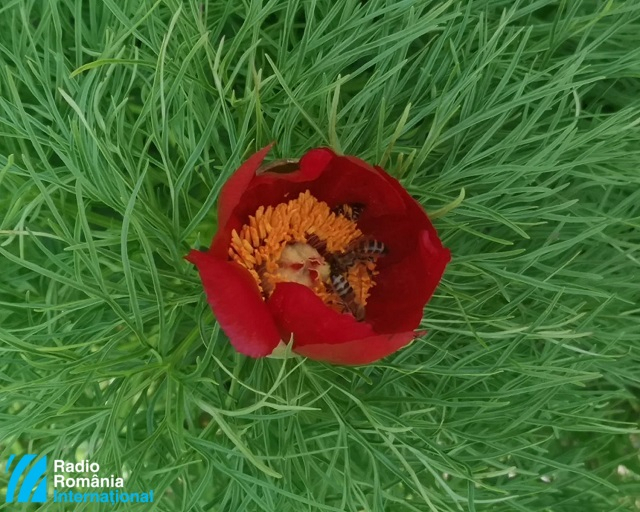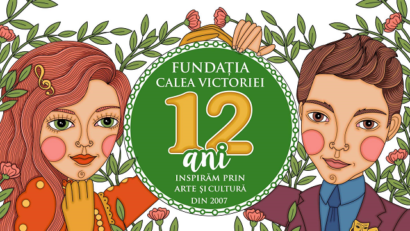The Romanian peony
A proposal from 2013 seeks to make the peony the national flower of Romania.

Ana-Maria Cononovici, 09.08.2022, 14:00
Every year on 15th May, the Community of the Romanian Peony celebrates Romanian Peony Day. Specialists have strongly argued in favour of making the peony, which is the emblem of Romanian war veterans, the national flower. A proposal to this end has existed since 2013, from a group of teachers and researchers from the Faculty of Horticulture of the University of Agronomy and Veterinary Medicine in Bucharest. Professor and Romanian Academy member Florin Stănică explains:
In 2013, our colleague from the floriculture department, professor Florin Toma, proposed at the Days of Romanian Horticulture, an event we are hosting every May, that the peony becomes the national flower of Romania. Our colleague put forward about ten arguments to back his proposal. One is that Romania is home to five indigenous species of peony that are growing in the wild in Romanian forests and fields, across the country, from the Black Sea coast, in Dobrogea, to Banat, in Oltenia, southern Moldavia, Ardeal and even Bihor county. These flowers come into bloom in the second part of May and are very beautiful. They cover entire meadows, in places such as Zau de Câmpie, where we find the steppe peony, as well as in forests, where they grow all over the forest. There are even local festivals and celebrations dedicated to these wonderful flowers.
We also learned from professor Florin Stănică that there is a nature reserve dedicated to the peony in Troianu forest, in Teleorman county, in southern Romania, in a protected area of national interest aimed at preserving the wild flora and the Romanian peony. Another reserve where the peony is considered a protected species is Zau de Câmpie, in Mureș county. Professor Stănică also provided some emotional arguments in favour of making the peony the national flower:
The peony grows in every single garden in Romania. More than 100,000 Romanians are named after this flower, which is bujor in Romanian, and the word features in all kinds of expressions such as ‘red as peony’ and ‘going peony in the face’. There’s also an old custom according to which peony flowers used to be added to the water in which new-born babies were bathed to make them stronger and protect them from evil. It must also be said that Romania is yet to have its own national flower, like other countries. Bulgaria, for example, has the rose, Turkey and The Netherlands have the tulip and Japan has the chrysanthemum. It would be important for Romania to have such a representative symbol.
Almost ten years after the idea to recognise the peony as Romania’s national flower was first put forward, we asked professor Florin Stănică how much progress has been made in this respect:
After we launched the initiative in 2013 we started collecting signatures and backing and would like to give a new impetus to this process this year, given the new possibilities of gathering signatures online. We want to create a special online platform and later to propose a parliamentary initiative that would be put to the vote. We’ve so far collected about 5,000 signatures but are planning to expand the process and work with horticulture universities around the country and other bodies and institutions, especially in the areas where the peony grows in the wild, so as to collect more signatures and backing for our proposal.
Professor Florin Stănică also said:
It’s remarkable and we’re happy that in recent years there’s been an initiative from the Romanian army which is using the peony as a symbol to honour the memory of the nation’s heroes, much like the poppy in Britain. Since around 2015, the army has been using the peony to pay tribute to the Romanian soldiers who died on battlefield.
The Romanian Peony community was also set up in 2015 by Cristina Turnagiu Dragna and Andreea Tănăsescu (the woman behind a project called La Blouse Roumaine), and which also supports the proposal to make the peony the national flower of Romania. Moreover, at the initiative of this community, Romanian Peony Day has been celebrated every year through a campaign that promotes this flower as being representative for Romanian culture and traditions. The Romanian peony was also adopted by the Camarazii association as a symbol for their events commemorating the heroism of Romanian soldiers, with the association registering this flower as their official symbol in the hope that more people would wear it on their lapels in a mark of respect for the country’s fallen soldiers.






























